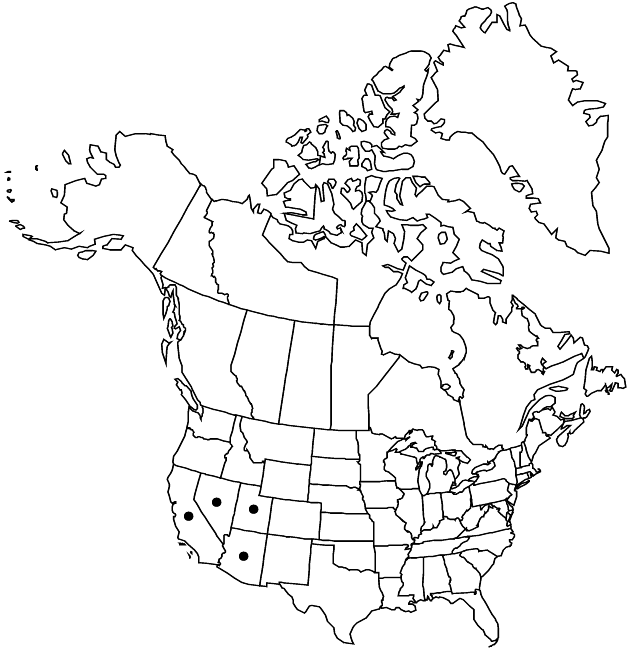Difference between revisions of "Eriophyllum wallacei"
Proc. Amer. Acad. Arts 19: 25. 1883.
Common names: Woolly easterbonnets Wallace’s woolly daisy
Illustrated
Basionym: Bahia wallacei A. Gray in War Department [U.S.], Pacif. Railr. Rep. 4(5): 105. 1857
Synonyms: Antheropeas wallacei (A. Gray) Rydberg Eriophyllum wallacei var. rubellum (A. Gray) A. Gray
FNA>Volume Importer |
imported>Volume Importer |
||
| (One intermediate revision by the same user not shown) | |||
| Line 8: | Line 8: | ||
}} | }} | ||
|common_names=Woolly easterbonnets;Wallace’s woolly daisy | |common_names=Woolly easterbonnets;Wallace’s woolly daisy | ||
| + | |special_status={{Treatment/ID/Special_status | ||
| + | |code=F | ||
| + | |label=Illustrated | ||
| + | }} | ||
|basionyms={{Treatment/ID/Basionym | |basionyms={{Treatment/ID/Basionym | ||
|name=Bahia wallacei | |name=Bahia wallacei | ||
| Line 59: | Line 63: | ||
|publication title=Proc. Amer. Acad. Arts | |publication title=Proc. Amer. Acad. Arts | ||
|publication year=1883 | |publication year=1883 | ||
| − | |special status= | + | |special status=Illustrated |
| − | |source xml=https:// | + | |source xml=https://bitbucket.org/aafc-mbb/fna-data-curation/src/2e0870ddd59836b60bcf96646a41e87ea5a5943a/coarse_grained_fna_xml/V19-20-21/V21_889.xml |
|tribe=Asteraceae tribe Heliantheae | |tribe=Asteraceae tribe Heliantheae | ||
|subtribe=Asteraceae (tribe Heliantheae) subtribe Baeriinae | |subtribe=Asteraceae (tribe Heliantheae) subtribe Baeriinae | ||
Latest revision as of 20:15, 5 November 2020
Annuals, 1–15 cm. Stems erect to spreading or ascending. Leaf blades obovate to spatulate, 7–20 mm, sometimes 3-lobed, ultimate margins entire, plane (apices ± rounded), faces ± woolly. Heads usually borne singly. Peduncles 1–3 cm. Involucres broadly campanulate, 4–6 mm diam. Phyllaries 5–10, distinct. Ray florets 5–10; laminae usually cream or yellow, sometimes white with red veins, 3–4 mm. Disc florets 20–30; corollas 2–3 mm (tubes cylindric, throats funnelform, gradually dilated, lobes glandular; anther appendages subulate, not glandular). Cypselae ± 2 mm; pappi usually of 6–10 ± oblong scales 0.4–0.8 mm, rarely 0. 2n = 10 + 0–1 I or 0–3 B.
Phenology: Flowering Dec–Jul.
Habitat: Sandy or gravelly openings, creosote-bush or sagebrush scrublands, Joshua Tree or pinyon-juniper woodlands, or chaparral
Elevation: 30–2400 m
Distribution

Ariz., Calif., Nev., Utah, Mexico (Baja California).
Discussion
Selected References
None.
Lower Taxa
None.
